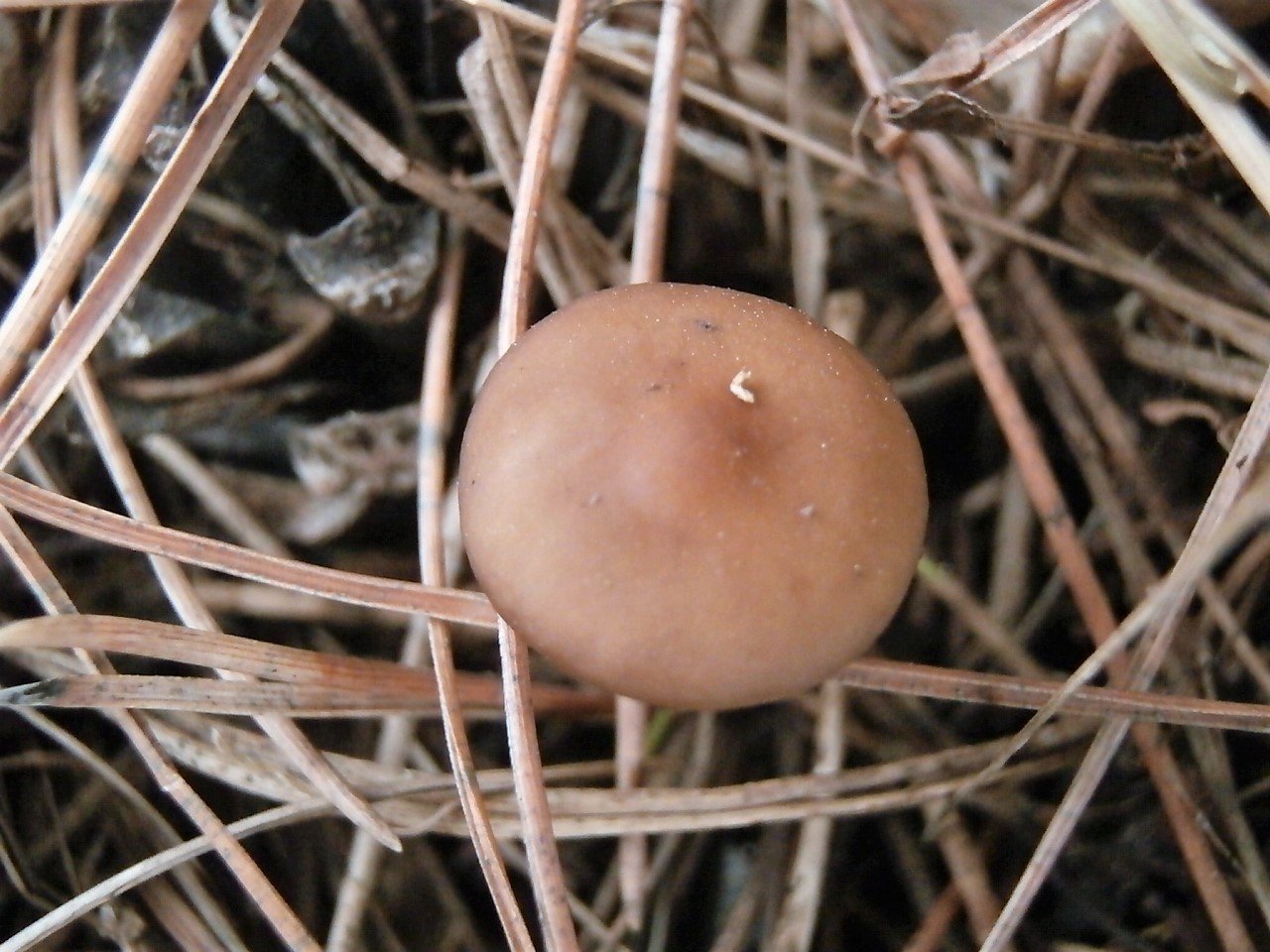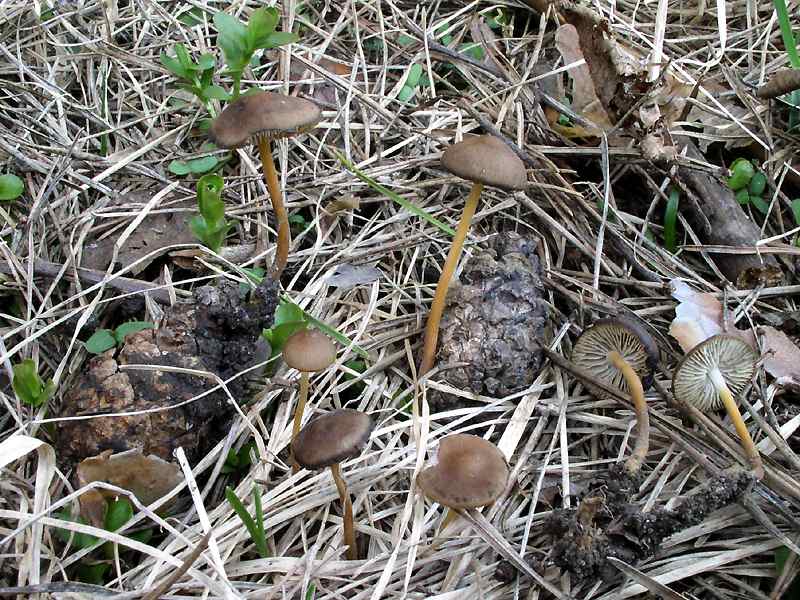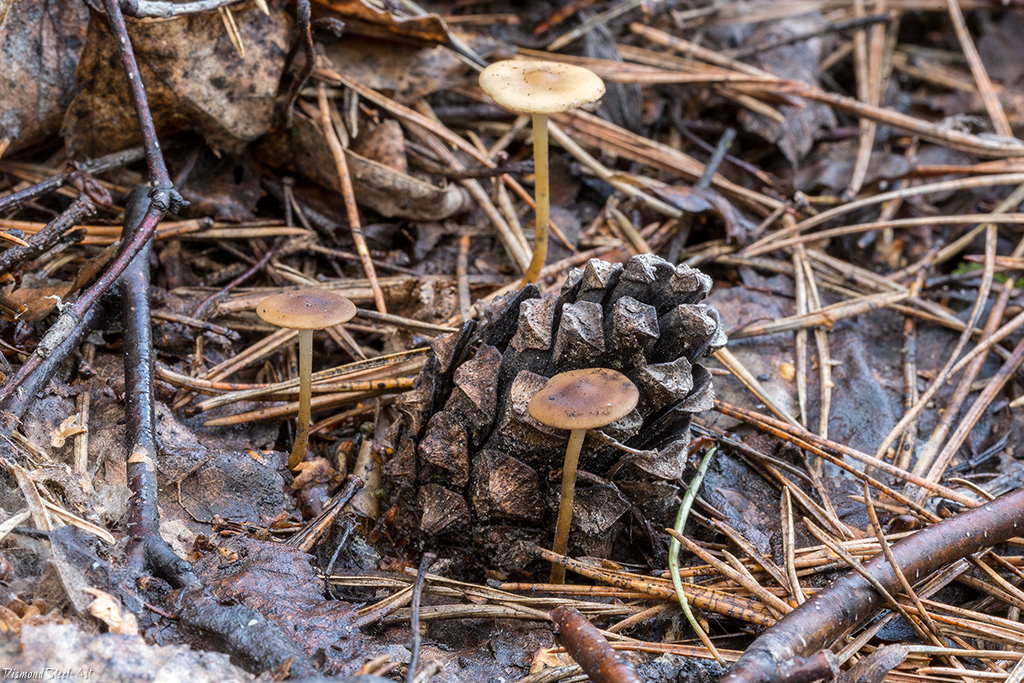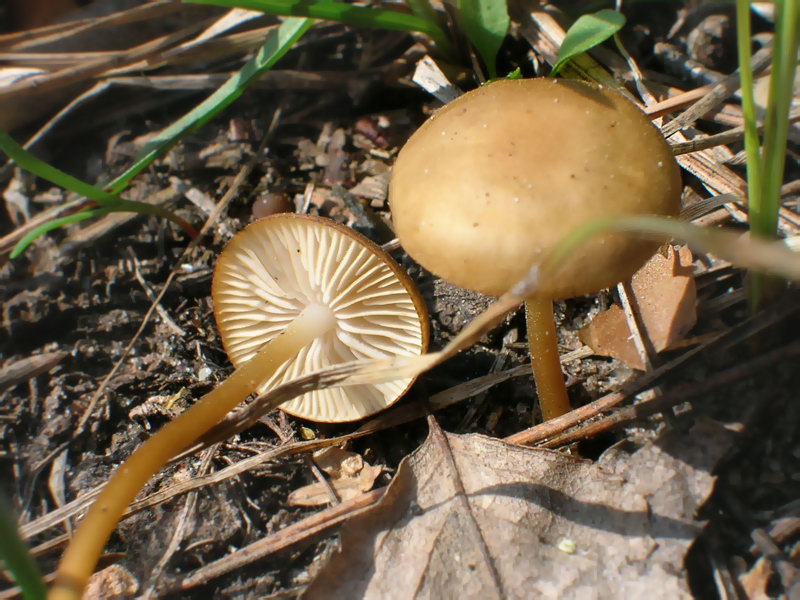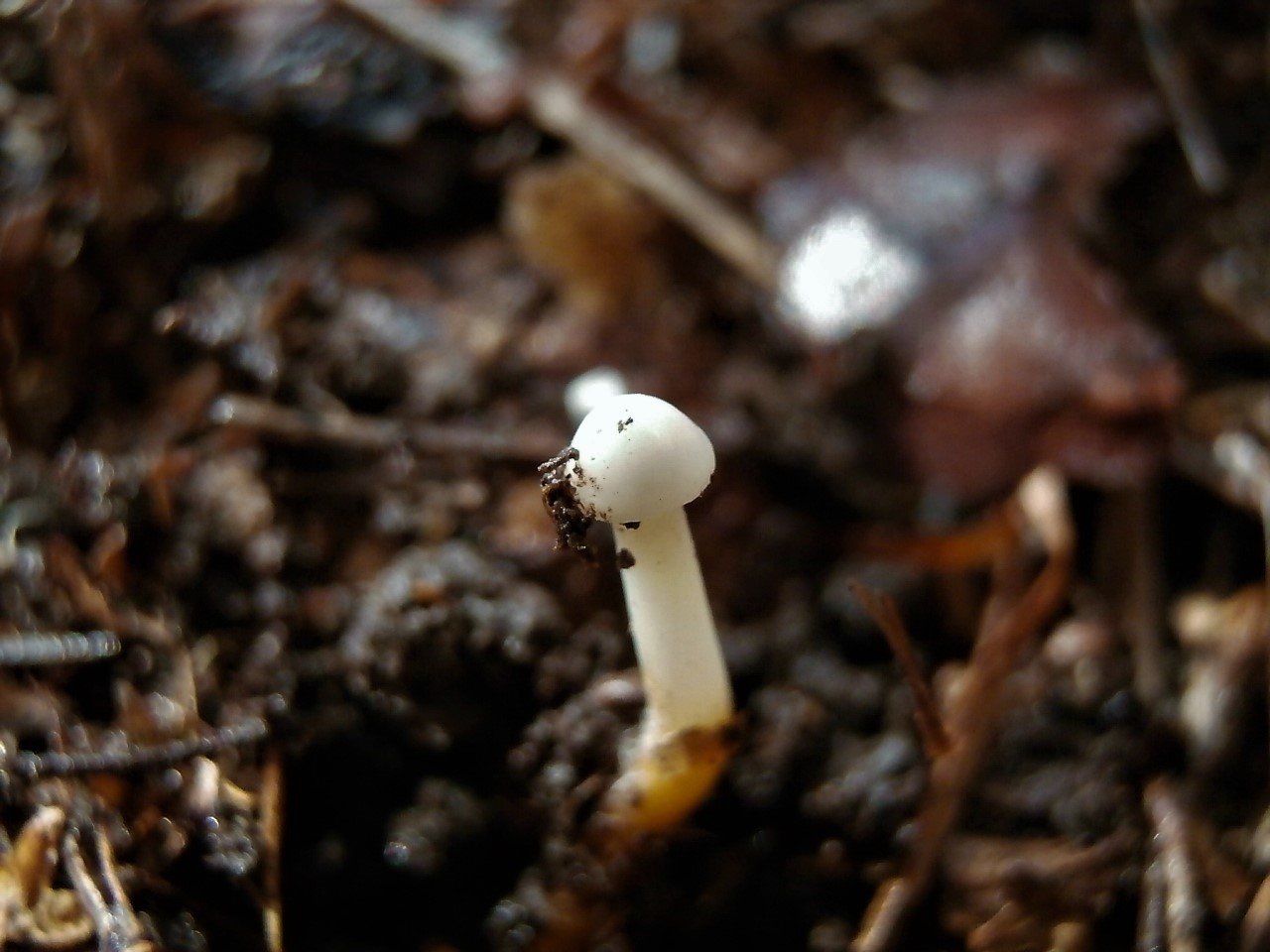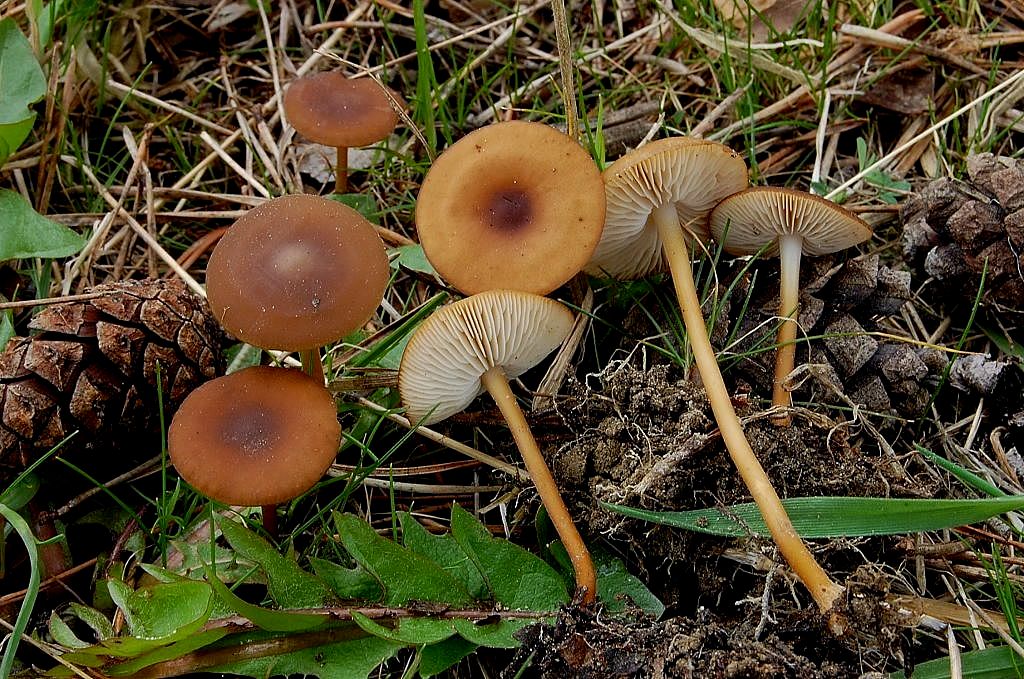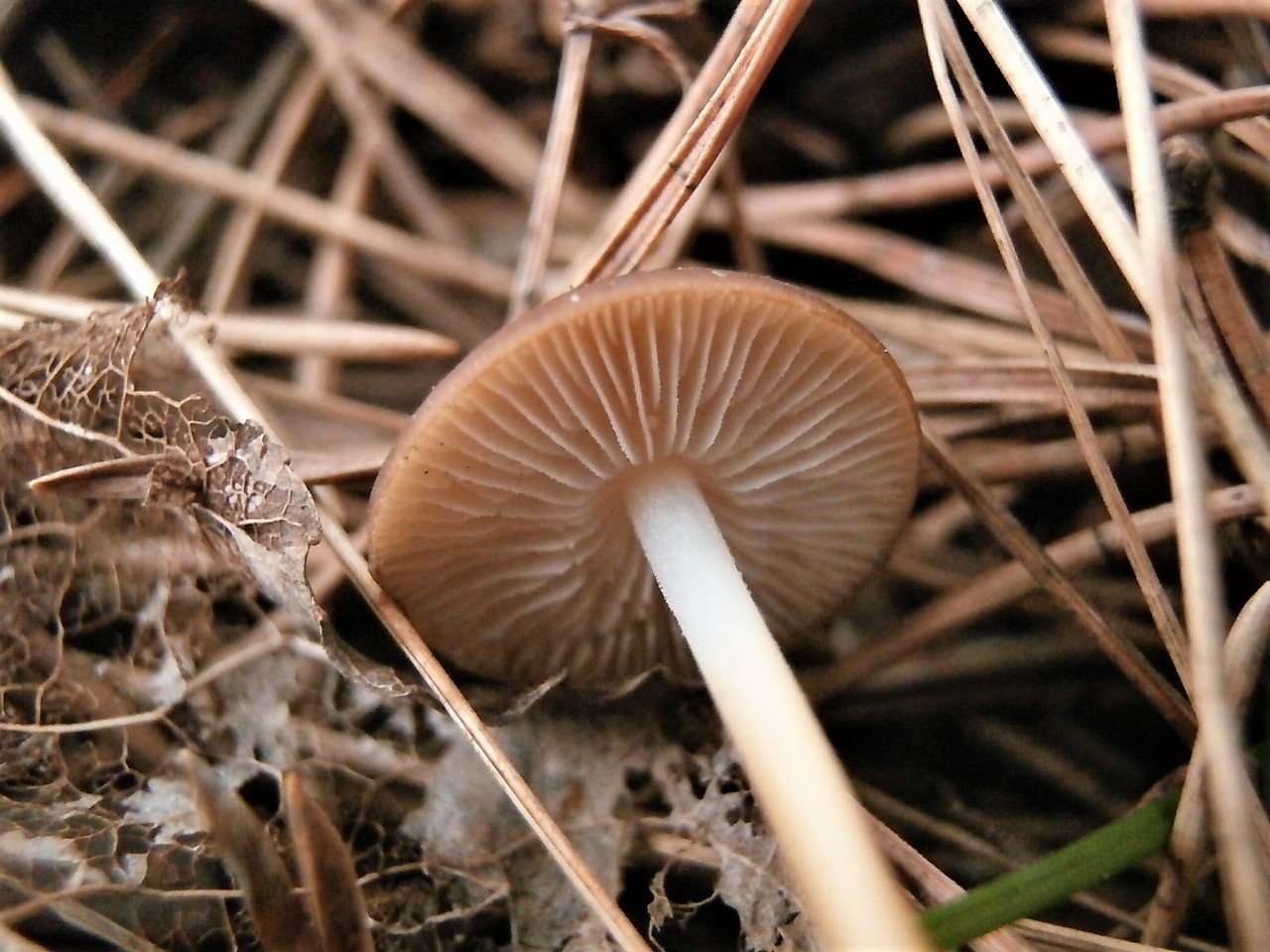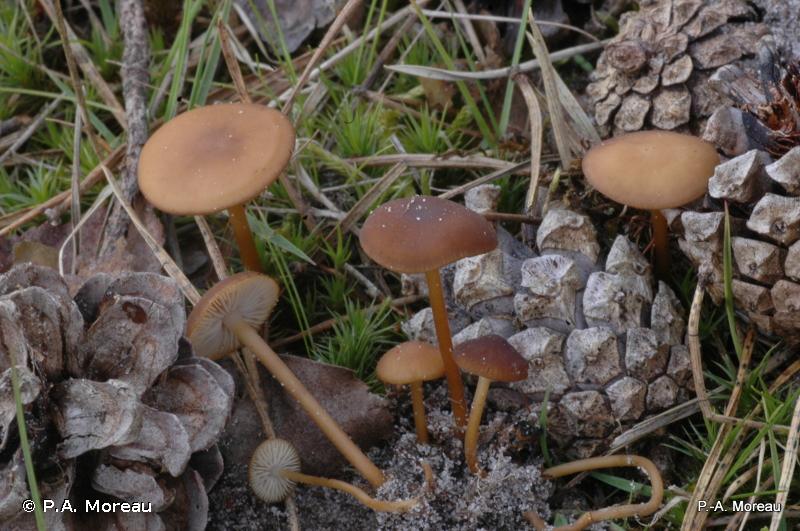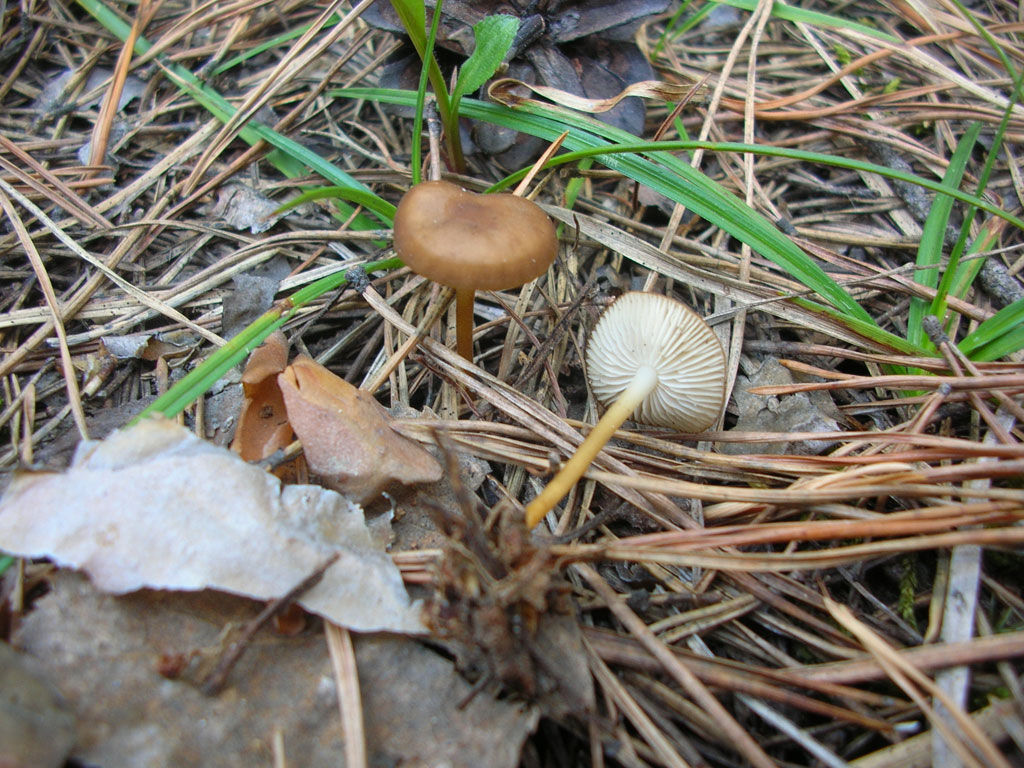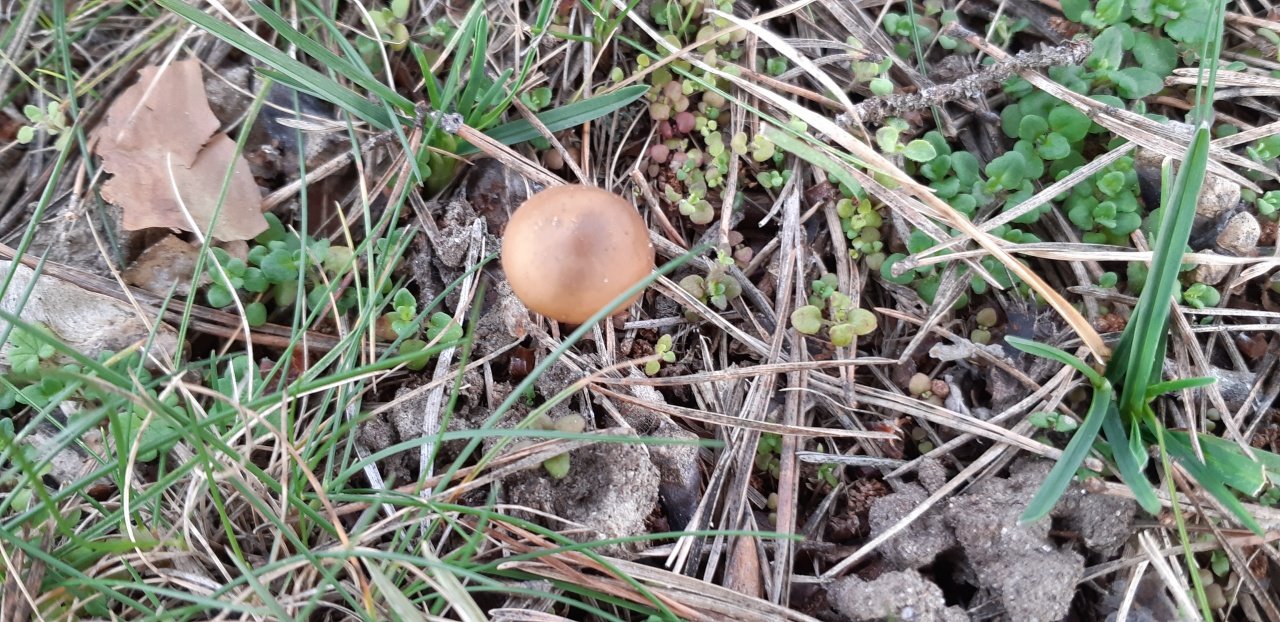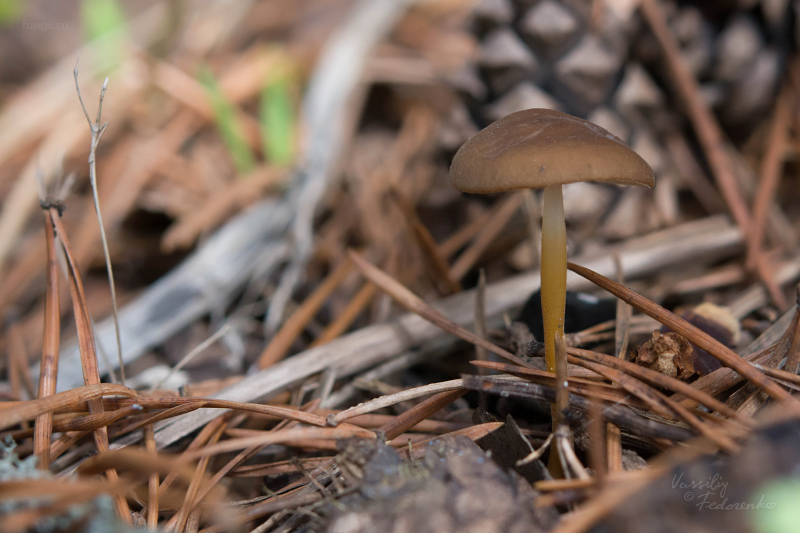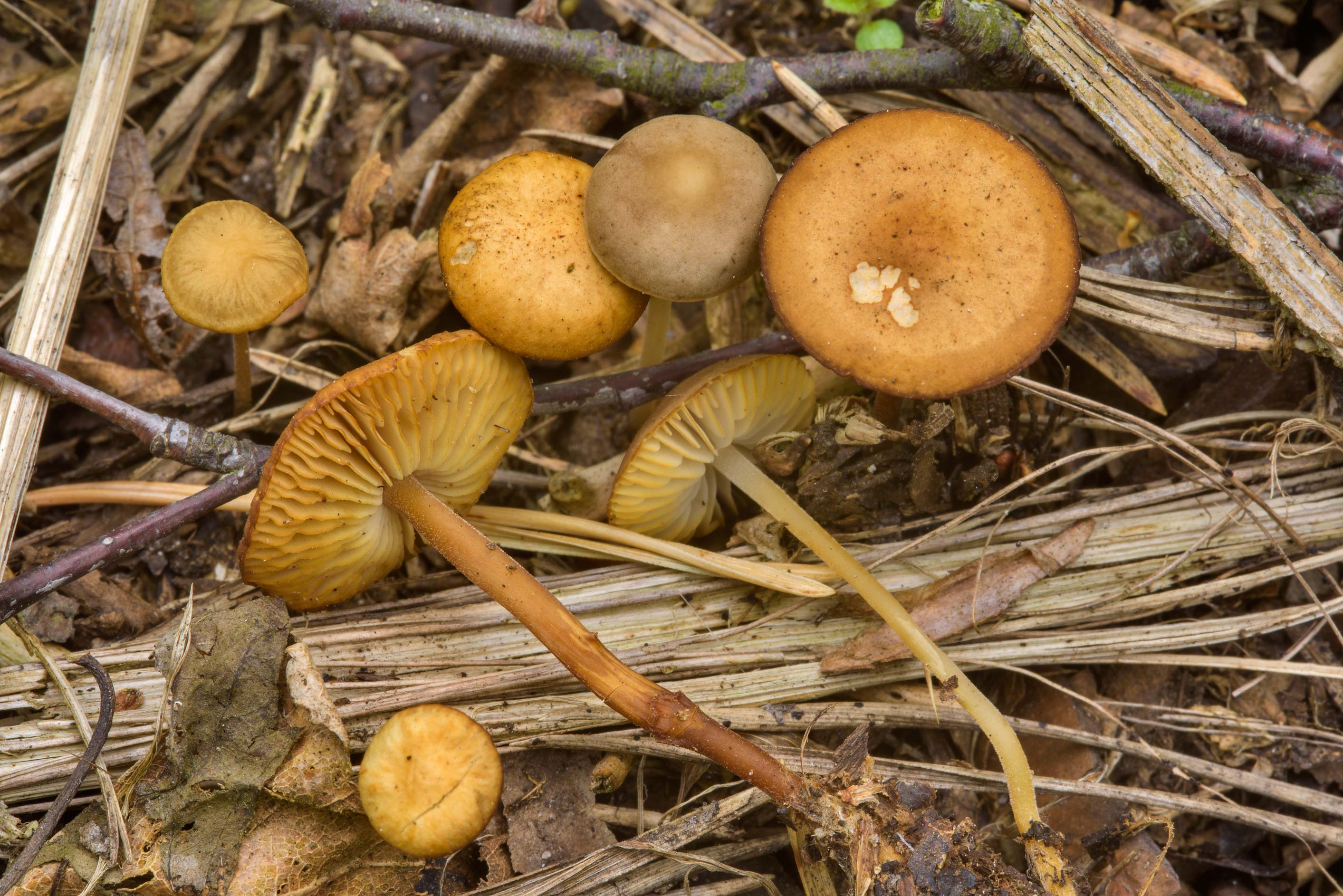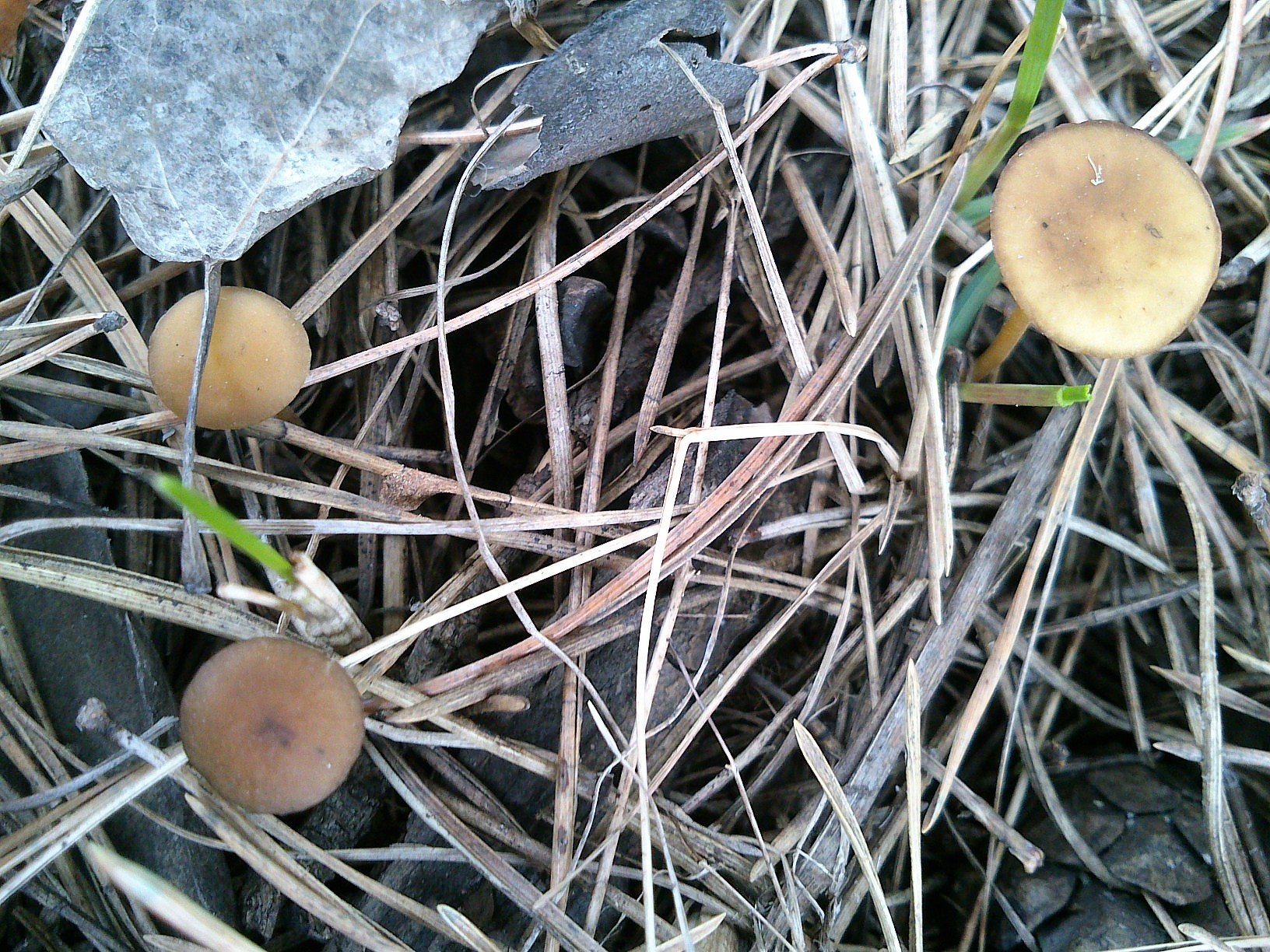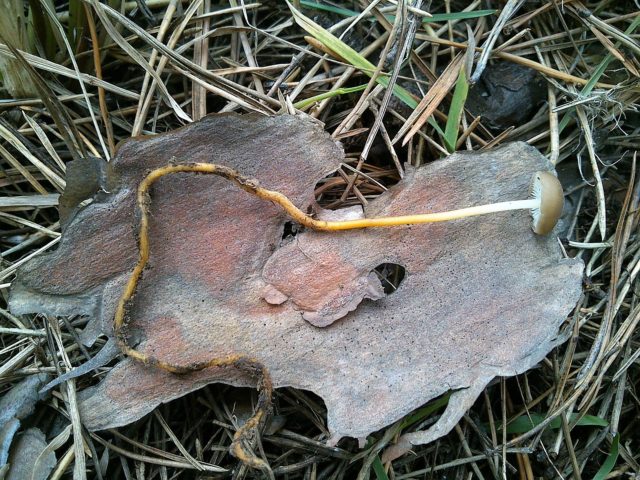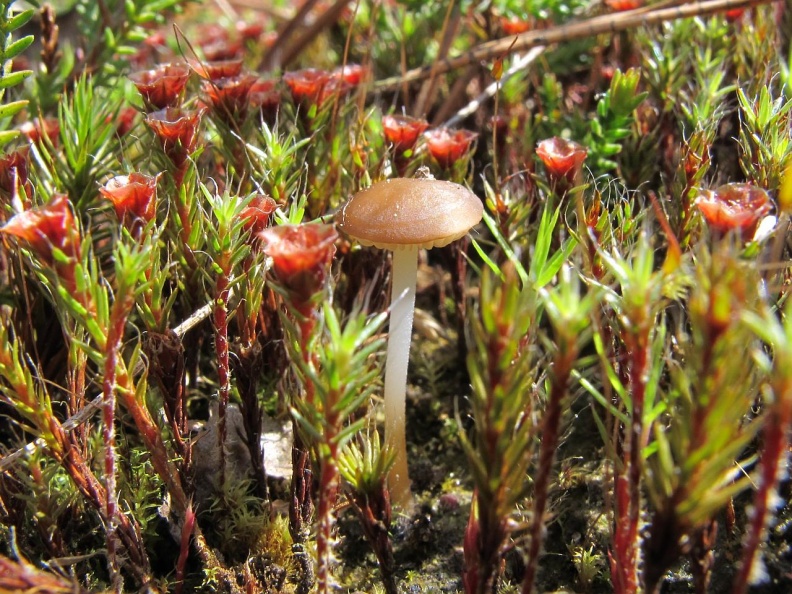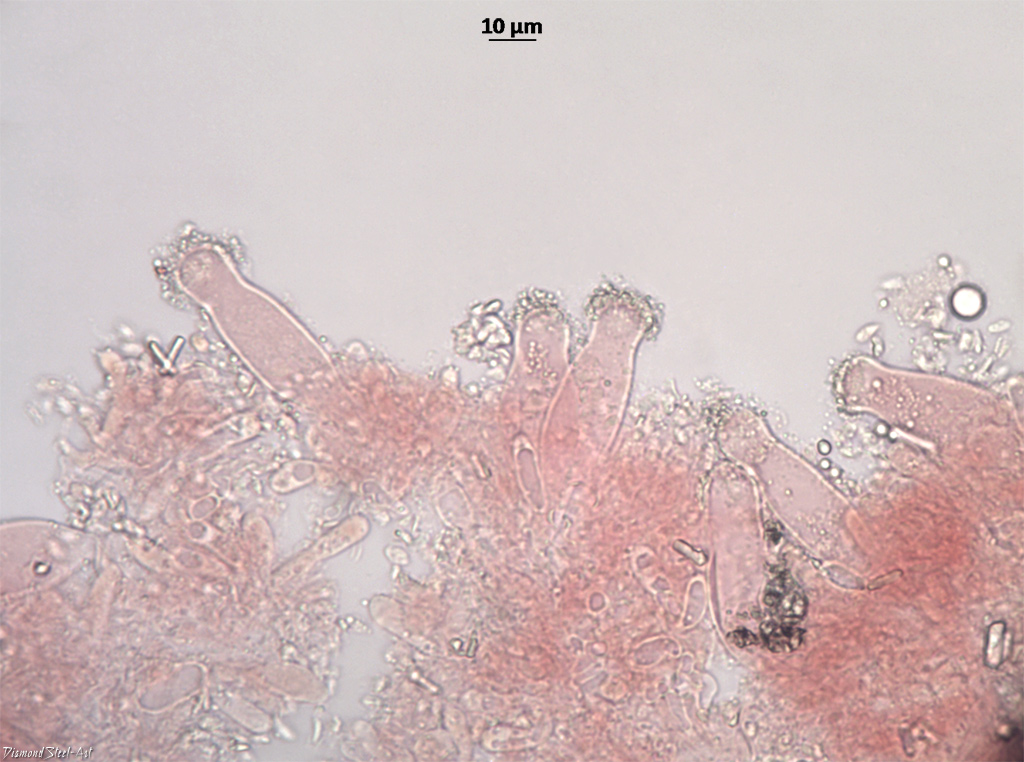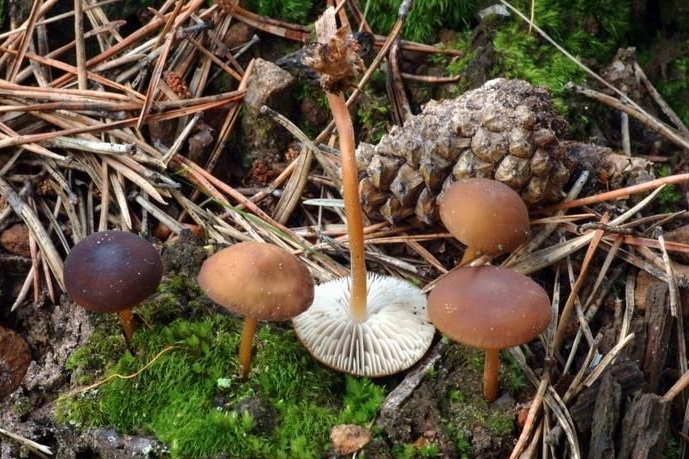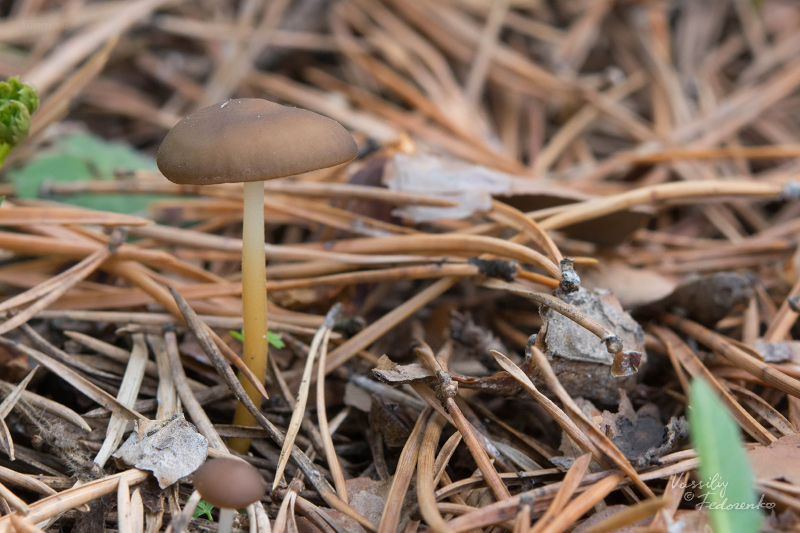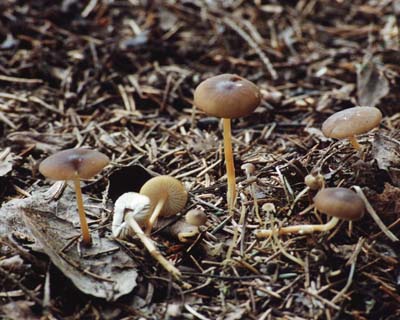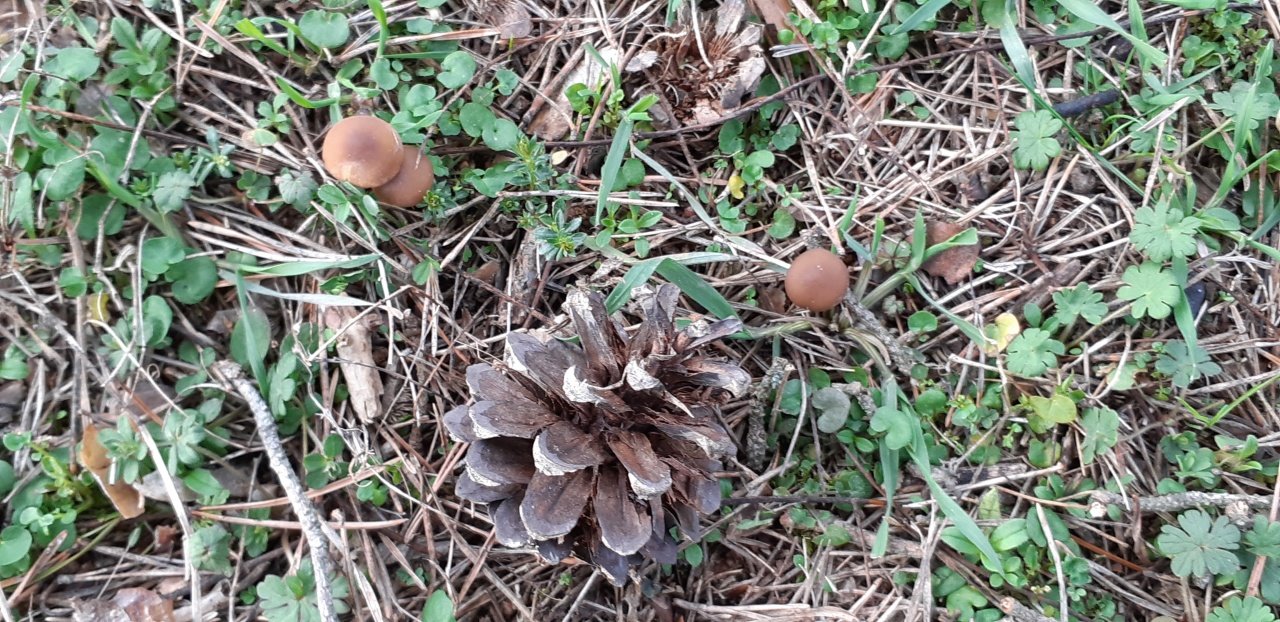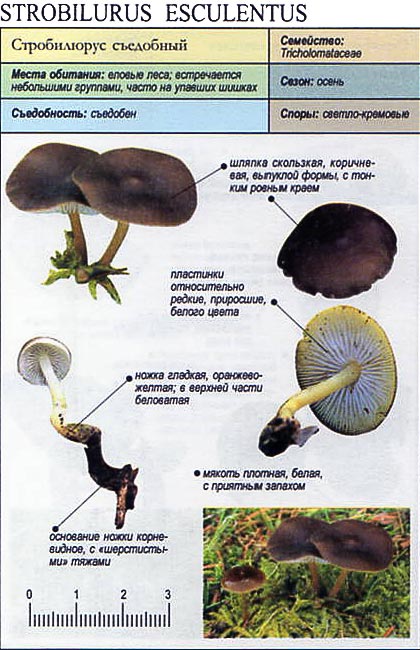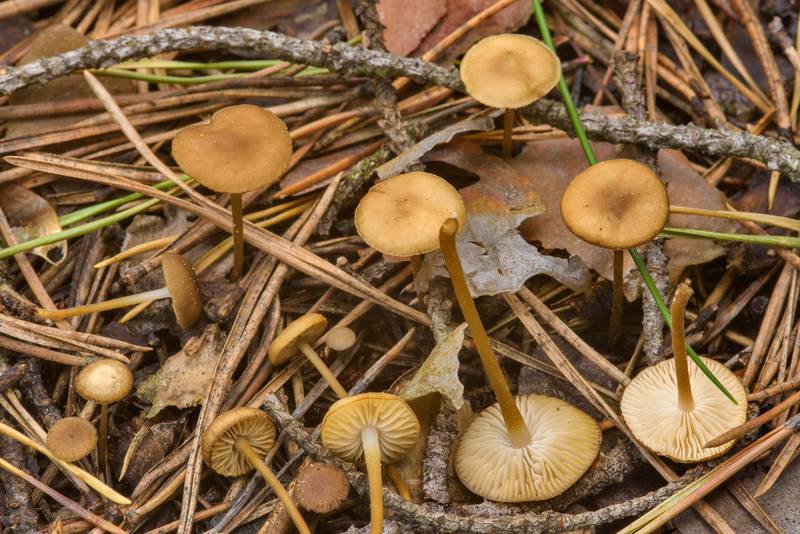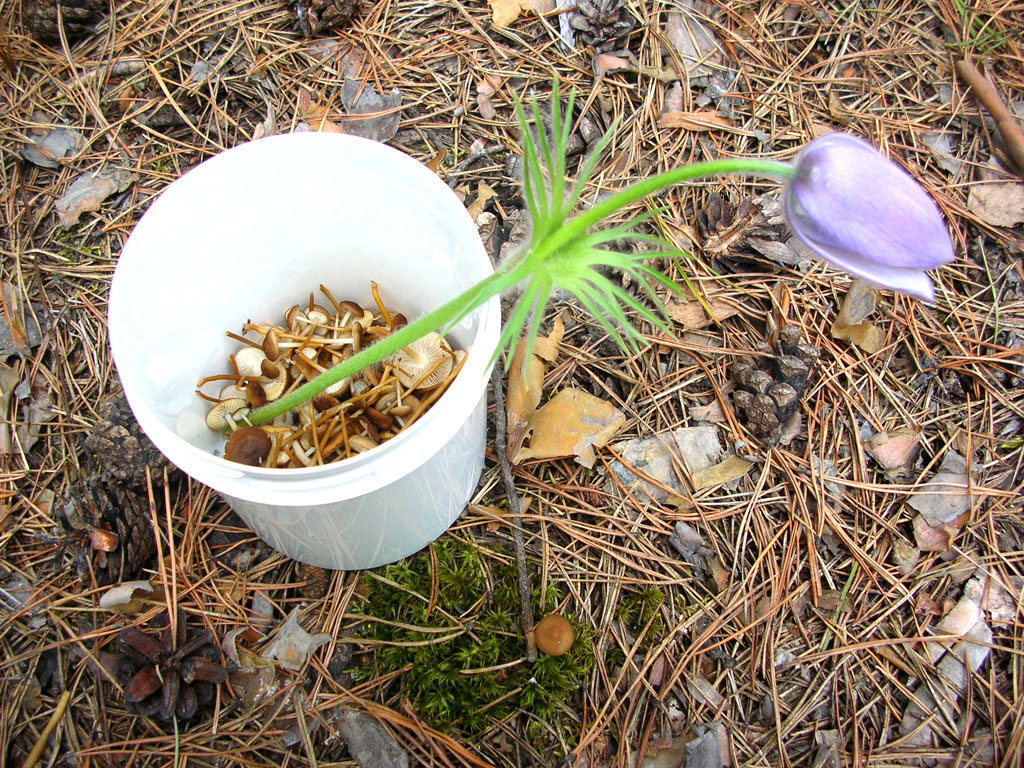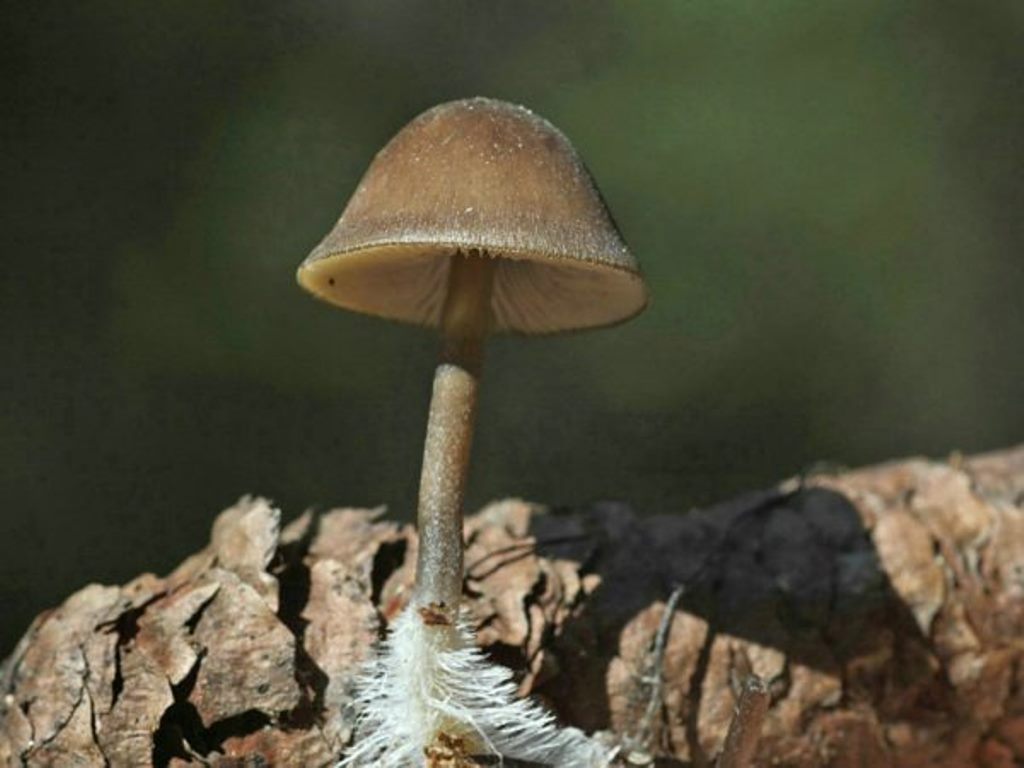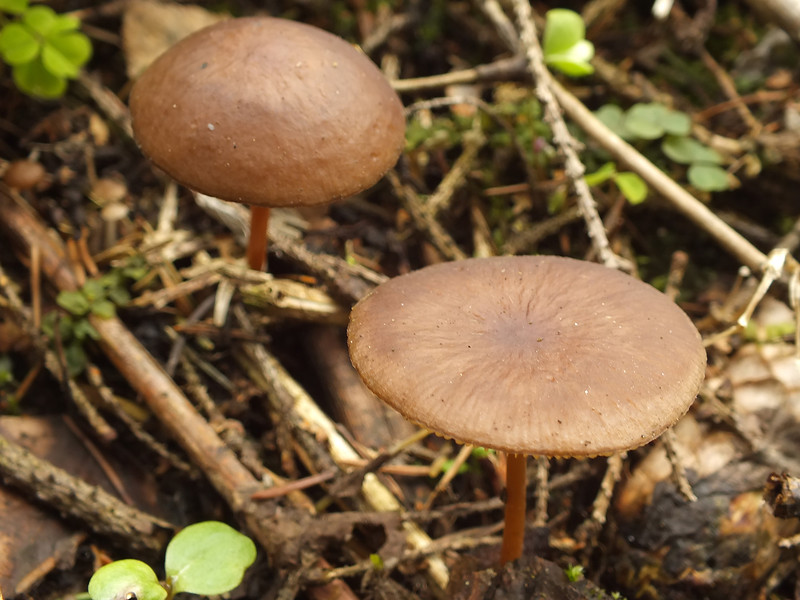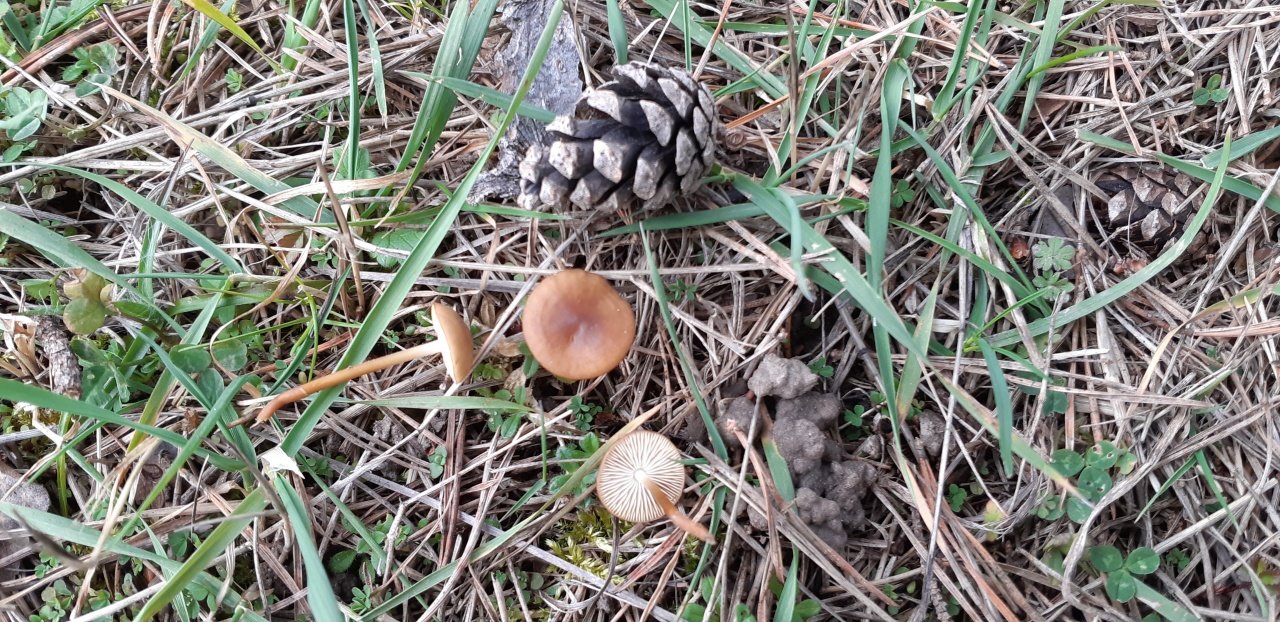Expand for viewing
Depending on weather conditions, the mushroom grows from about mid-April to mid-May - this is the most abundant period in terms of fruiting. Melting snow cover is not a hindrance for the first mushrooms. It is much less common in summer (after a cold snap) and late autumn (during warming) - strobilurus tries to return to its spring childhood. Finding them at this time is very problematic - there is too much competition with other more noticeable mushrooms. And there is no point in collecting them at this time. They are few in number and smallish. They grow in spruce forests and forests mixed with spruce, exclusively on spruce cones, immersed in forest litter, sometimes in numerous groups. In terms of yield, year on year is not necessary. Saprotroph fungus, i.e. extracts nutrients from dead organics. By the way, among the animal world, dung beetles, earthworms, crayfish, hyenas, and vultures are saprotrophs.
We were honored, showed diligence (well, for example, it turned out to be a bummer with the lines) and typed strobilurus. We are now starting to prepare delicious and healthy food. Of course, we will not cut the hat. These mushrooms love to be boiled whole. We cut off the rigid leg completely, very conveniently with scissors. You can go into the forest with them, I mean - with your legs and with scissors. And in the forest with nail scissors, the best half of humanity will look very mysterious and, I'm not even afraid of the word, erotic. Well, I'm afraid to voice the associations about men with scissors (pruners) in the forest. Boil for 10 minutes, remove the foam and sniff, sniff, sniff. this mushroom flavor. On a skovod-gulliver mushrooms look like lilliputians, somehow lonely and restless. To treat a company of several people, you need to show angelic patience and hard work when gathering. You can collect them, perhaps, not for food, for fun. Surprise yourself and your guests.
Well, what similar can be found together (instead of) with edible strobilurus? At the same time, two more types of strobiluses grow: root strobilus (twine-legged) and cuttings strobilurus (knitting), outwardly they are all practically indistinguishable from each other. But the last two species have chosen exclusively pine cones for themselves, which means that the forest is different - the presence of pine is mandatory.
Immediately visible difference between the following mushrooms from edible strobilurus Is the color of the leg. Only our mushroom has a leg mostly light yellow. This feature alone allows you to cut off all suspicious specimens.
In April-May, Mycena strobilicola is also found, it also lives on spruce cones. Its cap is brown-gray-brown, the leg is fragile, of about the same color, and pubescence is often noticeable at its base. And, of course, the ammonia amber of the pulp of this mycene (the smell of ammonia and urine). This is normal for mycena, but if a person has an ammoniacal odor from the mouth, then this can be a harbinger of a whole bunch of diseases. It is no longer necessary to turn to mycologists.
Also in late April and early May, Entoloma vernum appears. This is already a comrade (mushroom), or a friend (entoloma), a more serious one, because considered poisonous. The color of the cap is from gray-brown to black-brown, but can fade and become light. Here again, the color of the leg will help us figure out - the entoloma has brownish shades. And, to be honest, this entoloma looks kind of gloomy, unkind, unkind. He himself does not ask for hands, which is for the best.
The mouse-tailed beospore (Baeospora myosura) appears only in autumn, so we will not bother with its signs
It can only be noted that only the presence of a cone is important for her, and whether it is pine or spruce, it does not matter. This is such a mushroom tolerance
May grace be upon you in harvesting Strobilurus esculentus.
False doubles
The twine-legged strobilus has edible counterparts. These include:
- Cherenkovy, conditionally edible specimen. Convex cap, up to 2 cm in diameter, matte, colored light yellow. The leg is thin and long.The flesh of young specimens is white with a pronounced mushroom smell and taste. In old mushrooms, it is tough and bitter.
- Edible, small nondescript species growing on fallen pine and spruce cones. The variety is edible, the caps are used fried, stewed and pickled. You can recognize the variety by its miniature hat and thin, long leg. The hemispherical convex cap is colored coffee, cream or gray. A smooth surface becomes shiny and slimy after rain. The tasteless pulp is dense and white, has a pleasant mushroom aroma.
- Mycena is pineapple loving, an edible twin that grows on rotting spruce and pine cones. Begins fruiting from May. The species can be recognized by the brown bell-shaped cap and thin leg length, as well as by the pronounced ammonia smell.
Edible strobilurus, Strobilurus esculentus
Hat: Diameter 1-3 cm, hemispherical in youth, then prostrate. In the center, as a rule, there is a characteristic darkish tubercle. The edges are wavy, the plates are translucent. Color - cream, from light, whitish to almost brown. From moisture it becomes dark, shiny. The pulp is thin, with an intense and very pleasant scent.
Hymenophore: The plates are loose, frequent, rather wide, whitish (not pure white), often with darker spaces.
Spore powder: White.
Leg: Thin, 2-3 cm in height, hollow, lighter on top, below - the color of the cap (various shades are possible). The flesh of the leg is creamy.
Spreading: It occurs from mid-April to late autumn, although the main fruiting peak occurs in the spring. It grows on spruce cones buried in coniferous litter.
Similar species: On pine cones, the twine-footed strobilurus (Strobilurus stephanocystis), as well as the cutting strobilius (Strobilurus tenacellus>), grow. They are indistinguishable from each other.
Edibility: The mushroom is edible and has a great aroma, but its size does not allow us to consider Strobilurus as a food product.
Author's notes: It was at the very beginning of my mushroom career. Having already heard a lot about spring pineapple lovers, I was in the mood for easy success. It was not there. In the middle and end of April, I climbed all the Moscow forest parks, carefully looking for “little brown hats” under belated snow and vaguely feeling that I was somehow deceived. There were none! On May, I went to the village, where I gloomily plowed through the spruce forests. There was nothing in the first spruce forest. In the second - nothing too. It seemed that there was nothing in the third, when suddenly. In short, I found it. Found it all the same. In a single place, under a single spruce - mixed with alkaline mycena (Mycena strobilicola). Neither strobiluri nor mycenae were found anywhere else. Such is the mushroom forest.
It should also be noted that it is not for nothing that in some places this Strobilurus is called not edible, but juicy. The point, of course, is not that he has some kind of juice - it's about the smell. And he has such a smell that you rock. You will download in an amicable way. Good smell, delicious, mushroom.
Delicate spring mushrooms Somehow they do not tolerate the first May heat very well: they dry out very quickly, wrinkle and lose all aesthetic appeal. However, Strobilurus esculentus is a swift mushroom: as soon as coolness sets in, it returns to its favorite buds.
The late and bustling spring of 2012 was to their liking. In the spruce forest I did not want to walk at all - it was very strange to walk over live mushrooms.
The roots of the edible strobilirus go deep into the bump. And if you take into account that the cones themselves are quite deeply immersed in the litter, it turns out that it is perfectly visible in the picture. Most of the mushroom is hidden from prying eyes; only a neat “carnation” sticks out on the surface.
Edible strobilus is easy to identify: it is enough to see a spruce cone nearby (which is not difficult) and to smell the mushroom from the accompanying mycens.By the way, it is curious that in our area (from where, in fact, the photographic cone), alkaline mycenes first grow, then edible strobiluriuses, and only then, in late autumn, mouse-tailed beospores (Baeospora myosura). And the woodpecker who trained the cones for this whole feast was recently spotted at the telegraph pole. In short, each has his own hobby.
I really wanted to make sure that this glorious mushroom really originates from a cone, but I spoiled one immediately, without getting to the bottom of any cones, and I felt sorry for the rest: there were not so many of them, but all that were gathered around a single Christmas tree ...
Autumn, October, which have not yet seen snow or frost, strobiliuses are not similar to themselves. Only smell gives them away. And, of course, the bump.
Consumption
Twine-legged strobilus is often used fried and pickled. In cooking, only hats are used, since the flesh at the leg is tough and tasteless. Before cooking, the caps are washed and boiled for 10 minutes. After that, they are thrown into a colander to eliminate excess moisture. Prepared specimens are ready for subsequent preparation.
The marasmic acid found in the pulp has anti-inflammatory properties. Therefore, the mushroom is widely used in alternative medicine.
Cutting strobilurus, a twin of the variety described above, has a very high fungitoxic activity, as a result of which the growth of other fungi is suppressed. Thanks to this good characteristic, fungicides of natural origin are made from fruit bodies.
Strobilurus stephanocystis
Current title
| Index Fungorum | Strobilurus stephanocystis (Kühner & Romagn. Ex Hora) Singer | |
| MycoBank | Strobilurus stephanocystis (Kühner & Romagnesi ex Hora) Singer |
Systematic position
Etymology of the species epithet
Stephanocystis, e mic. having cystids with a crown. From στεφάνπ (Crown, wreath, head ornament) + cystis, ides (Mic. Having cystids).
Synonyms
- Pseudohiatula stephanocystis Kühner & Romagn. ex Hora, Trans. Br. mycol. Soc. 43 (2): 455 (1960)
- Marasmius esculentus subsp. pini Singer, Annls mycol. 41 (1/3): 133 (1943)
- Collybia stephanocystis Kühner & Romagn., Fl. Analyt. Champ. Supér. (Paris): 94 (1953)
Other names: Strobilurus venocystoid, Strobilius capitate cystic.
Habit
Fruit body: Cap and stem (agaricoid)
Hymenophore: Lamellar (including folded or with rudimentary plates)
Hat
The cap is 10 - 20 (25) mm in diameter, convex, then convex-prostrate, with a straight edge, sometimes with a small tubercle in the center. The surface is not hygrophilous, smooth, yellow-brown, reddish-brown or reddish-yellow.
The plates are loose, white, cream, with a slightly fringed edge.
Leg
Stem 5 - 10 cm long, 1 - 3 mm in diameter, cylindrical, tapering towards the base, hollow, light at the cap, darkens towards the base to yellow-brown. The surface is covered with fine white fluff, which is denser in the upper part of the stem and sparse downward.
Pulp
The flesh is thin, whitish in the inner parts, to the edges of the same color as the surface of the cap or leg. The smell and taste are pleasant, mushroom.
Microscopy
Spores 6.5 - 8.0 × 3.0 - 4.5 μm, Q = 1.6 - 2.1, ellipsoidal.
Basidia 20 - 35 × 7.5 - 11 μm, 4-spore, with a buckle at the base.
Cheilocystids 20 - 60 × 10 - 25 µm, numerous, bottle-shaped, thick-walled, colorless, the upper part is often covered with a transparent crystal cap.
Pleurocystids are similar to cheilocystids.
Pileipellis consists of clavate elements 10 - 25 × 7.0 - 15 µm, with thin, colorless or pale yellow-brown walls, often with brown intracellular pigment.
Pileocystids 30 - 50 × 5.0 - 10 μm, bottle-shaped, thin-walled, colorless.
Caulocystids 20 - 40 × 4.0 - 10 µm, from cylindrical to bottle-shaped, scattered along the entire length of the stem, but most densely located in the upper part.
Hyphae without buckles.
Ecology and distribution
- Substrate: Soil, litter
- Substrate: Other plant substrates (cones, acorns, nuts, inflorescences)
In pine and mixed forests. It grows in groups on pine cones buried in the soil.
Fruiting
Spring is the beginning of summer.
The divisions correspond to the decades of the month.
Nutritional properties
Similar species
- Cutting strobilurus (Strobilurus tenacellus) - reliably differs only in microscopic features. Cheilocystids are fusiform, with a sharp apex.
- Edible strobilurus (Strobilurus esculentus) - grows on fir cones.
- Mycena strobilicola - grows on both spruce and pine cones. Usually larger in size and with a bell-shaped cap.
Distribution in Western Siberia
Everywhere under the pine trees.
Related materials
- Bas C., Kuyper Th. W., Noordeloos M. E., Vellinga E. C. Flora Agaricina Neerlandica. Critical monographs on families of agarics and boleti occurring in the Netherlands. Vol. 4. Strophariaceae, Tricholomataceae. - Rotterdam - Brookfield: A. A. Balkema, 1999 .-- 190 p. - P. 179.
- Breitenbach J, Kränzlin F. Fungi of Switzerland. A contribution to the knowledge of the fungal flora of Switzerland. Vol 3. Boletes and agarics. 1st part. Strobilomycetaceae and Boletaceae, Paxillaceae, Gomphidiaceae, Hygrophoraceae, Tricholomataceae, Polyporaceae (lamellate). - Lucerne: Verlag Mykologia, 1991 .-- 360 p. - P. 320.
Link to this page for prints
Ageev D.V., Bulonkova T.M.Strobilurus stephanocystis - Mushrooms of Siberia URL: https://mycology.su/strobilurus-stephanocystis.html (date of access: 28.02.2020).
Share link
Discussions
| Identifier: | 12232 |
| Responsible: | Dmitry Ageev |
| Date of creation: | 2016-05-06T03: 41: 44 |
| Last modified date: | 2018-11-15T11: 31: 37 (Dmitry Ageev) |
Age restrictions
Federal Law of the Russian Federation of December 29, 2010 No. 436-FZ "On the Protection of Children from Information Harmful to Their Health and Development."
Definitioner
- rare (rare smell)
-
In mycology, a rare smell, English. "Raphanoid", is interpreted very loosely and often denotes any smell of raw root vegetables, including potato, ie. not necessarily as sharp, sharp, and crisp as black or white radish.
- Basidia (Basidia)
-
Lat. Basidia. A specialized structure of sexual reproduction in fungi, inherent only in Basidiomycetes. Basidia are terminal (end) elements of hyphae of various shapes and sizes, on which spores develop exogenously (outside).
Basidia are diverse in structure and method of attachment to hyphae.
According to the position relative to the axis of the hypha, to which they are attached, three types of basidia are distinguished:
Apical basidia are formed from the terminal cell of the hypha and are located parallel to its axis.
Pleurobasidia are formed from lateral processes and are located perpendicular to the axis of the hypha, which continues to grow and can form new processes with basidia.
Subasidia are formed from a lateral process, turned perpendicular to the axis of the hypha, which, after the formation of one basidium, stops its growth.
Based on morphology:
Holobasidia - unicellular basidia, not divided by septa (see Fig. A, D.).
Phragmobasidia are divided by transverse or vertical septa, usually into four cells (see Fig. B, C).
By type of development:
Heterobasidia consists of two parts - hypobasidia and epibasidia developing from it, with or without partitions (see Fig. C, B) (see Fig. D).
Homobasidia is not divided into hypo- and epibasidia and in all cases is considered holobasidia (Fig. A).
Basidia is the place of karyogamy, meiosis and the formation of basidiospores. Homobasidia, as a rule, is not functionally divided, and meiosis follows karyogamy in it. However, basidia can be divided into probasidia - the site of karyogamy and metabasidia - the site of meiosis. Probasidium is often a dormant spore, for example in rust fungi. In such cases, probazidia grows with metabasidia, in which meiosis occurs and on which basidiospores are formed (see Fig. E).

See Karyogamy, Meiosis, Gifa.
- Pileipellis
-
Lat. Pileipellis, skin - differentiated surface layer of the cap of agaricoid basidiomycetes. The structure of the skin in most cases differs from the inner flesh of the cap and may have a different structure. The structural features of pileipellis are often used as diagnostic features in descriptions of fungi species.
According to their structure, they are divided into four main types: cutis, trichoderma, hymeniderma and epithelium.
See Agaricoid fungi, Basidiomycete, Cutis, Trichoderma, Gimeniderm, Epithelium.
- Pileipellis (Pileipellis)
-
Lat. Pileipellis, skin - differentiated surface layer of the cap of agaricoid basidiomycetes. The structure of the skin in most cases differs from the inner flesh of the cap and may have a different structure. The structural features of pileipellis are often used as diagnostic features in descriptions of fungi species.
According to their structure, they are divided into four main types: cutis, trichoderma, hymeniderma and epithelium.
See Agaricoid fungi, Basidiomycete, Cutis, Trichoderma, Gimeniderm, Epithelium.
- Cutis
-
The type of cap skin, consists of creeping non-gelatinized hyphae located parallel to the surface. The surface of the cap looks smooth.
Lat. Cutis.
See Gifa.
- Amyloid (Amyloid structure)
-
The structure is called amyloid if from Melzer's reagent (solution of 0.5 g of crystalline iodine + 1.5 g of potassium iodide + 20 ml of chloral hydrate + 20 ml of distilled water) turns blue, violet, sometimes almost black.
See Dextrinoid structure.


